
Welding equipment manufacturer Lincoln Electric (NASDAQ: LECO) reported Q3 CY2025 results exceeding the market’s revenue expectations, with sales up 7.9% year on year to $1.06 billion. Its non-GAAP profit of $2.47 per share was 1.9% above analysts’ consensus estimates.
Is now the time to buy Lincoln Electric? Find out by accessing our full research report, it’s free for active Edge members.
Lincoln Electric (LECO) Q3 CY2025 Highlights:
- Revenue: $1.06 billion vs analyst estimates of $1.04 billion (7.9% year-on-year growth, 1.6% beat)
- Adjusted EPS: $2.47 vs analyst estimates of $2.42 (1.9% beat)
- Operating Margin: 16.6%, up from 14.8% in the same quarter last year
- Free Cash Flow Margin: 19.3%, up from 16.6% in the same quarter last year
- Organic Revenue rose 5.6% year on year vs analyst estimates of 3.8% growth (182.5 basis point beat)
- Market Capitalization: $12.94 billion
"We achieved strong quarterly results with an increase in profit margins, solid adjusted earnings growth, and record cash flow generation,” said Steven B. Hedlund, Chairman and Chief Executive Officer.
Company Overview
Headquartered in Ohio, Lincoln Electric (NASDAQ: LECO) manufactures and sells welding equipment for various industries.
Revenue Growth
Reviewing a company’s long-term sales performance reveals insights into its quality. Any business can put up a good quarter or two, but many enduring ones grow for years. Over the last five years, Lincoln Electric grew its sales at a solid 9.1% compounded annual growth rate. Its growth beat the average industrials company and shows its offerings resonate with customers.
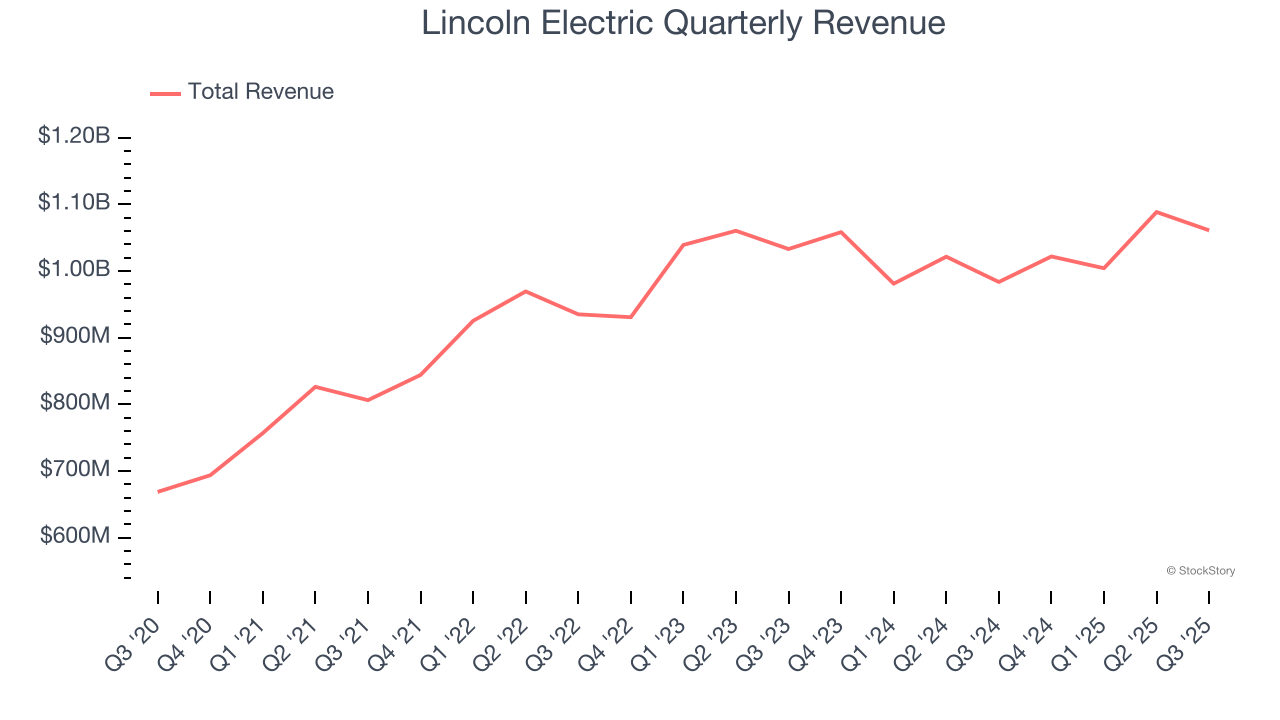
Long-term growth is the most important, but within industrials, a half-decade historical view may miss new industry trends or demand cycles. Lincoln Electric’s recent performance shows its demand has slowed as its annualized revenue growth of 1.4% over the last two years was below its five-year trend. 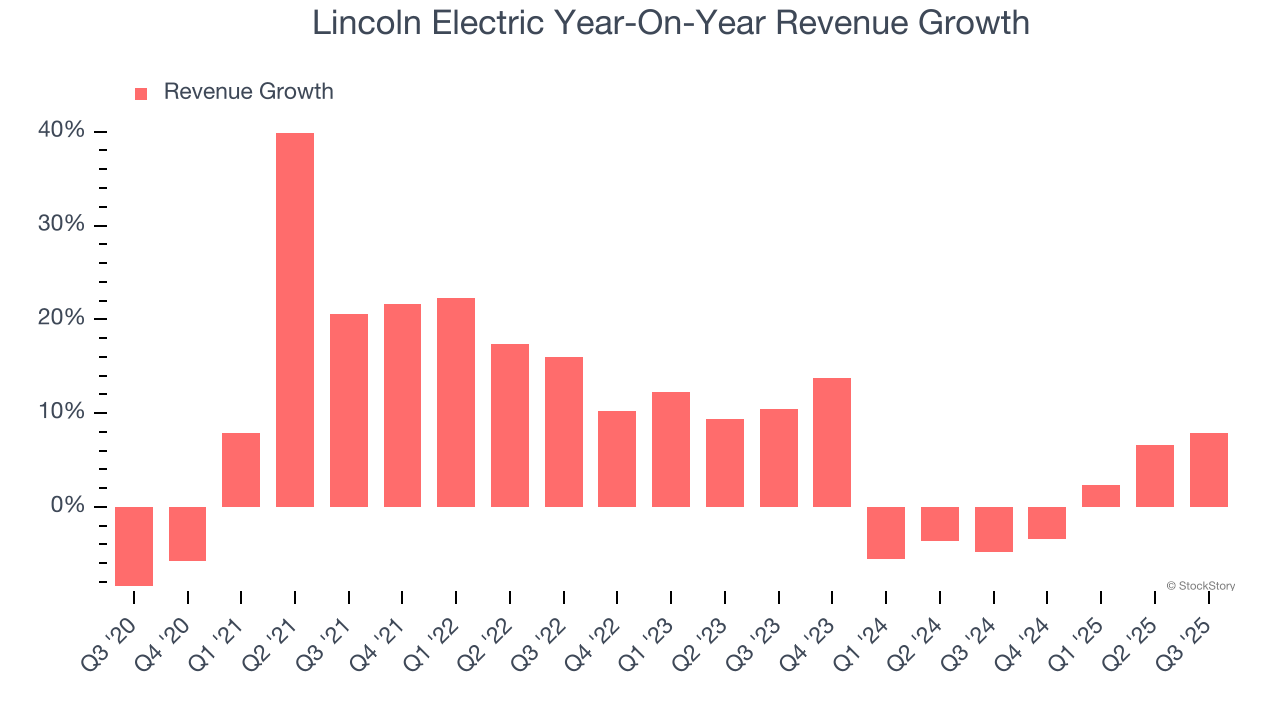
We can better understand the company’s sales dynamics by analyzing its organic revenue, which strips out one-time events like acquisitions and currency fluctuations that don’t accurately reflect its fundamentals. Over the last two years, Lincoln Electric’s organic revenue averaged 2% year-on-year declines. Because this number is lower than its two-year revenue growth, we can see that some mixture of acquisitions and foreign exchange rates boosted its headline results. 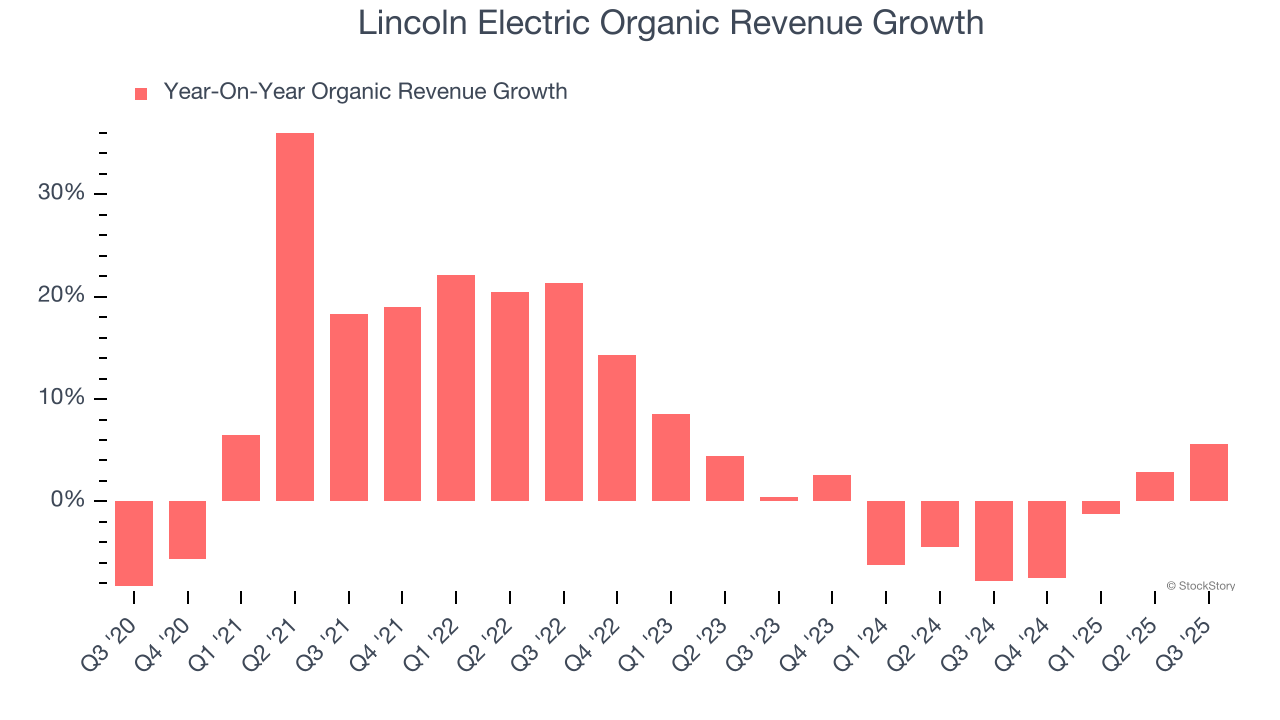
This quarter, Lincoln Electric reported year-on-year revenue growth of 7.9%, and its $1.06 billion of revenue exceeded Wall Street’s estimates by 1.6%.
Looking ahead, sell-side analysts expect revenue to grow 5.6% over the next 12 months. While this projection implies its newer products and services will fuel better top-line performance, it is still below the sector average.
Today’s young investors won’t have read the timeless lessons in Gorilla Game: Picking Winners In High Technology because it was written more than 20 years ago when Microsoft and Apple were first establishing their supremacy. But if we apply the same principles, then enterprise software stocks leveraging their own generative AI capabilities may well be the Gorillas of the future. So, in that spirit, we are excited to present our Special Free Report on a profitable, fast-growing enterprise software stock that is already riding the automation wave and looking to catch the generative AI next.
Operating Margin
Lincoln Electric has been a well-oiled machine over the last five years. It demonstrated elite profitability for an industrials business, boasting an average operating margin of 16%. This result isn’t too surprising as its gross margin gives it a favorable starting point.
Looking at the trend in its profitability, Lincoln Electric’s operating margin rose by 3.2 percentage points over the last five years, as its sales growth gave it operating leverage.
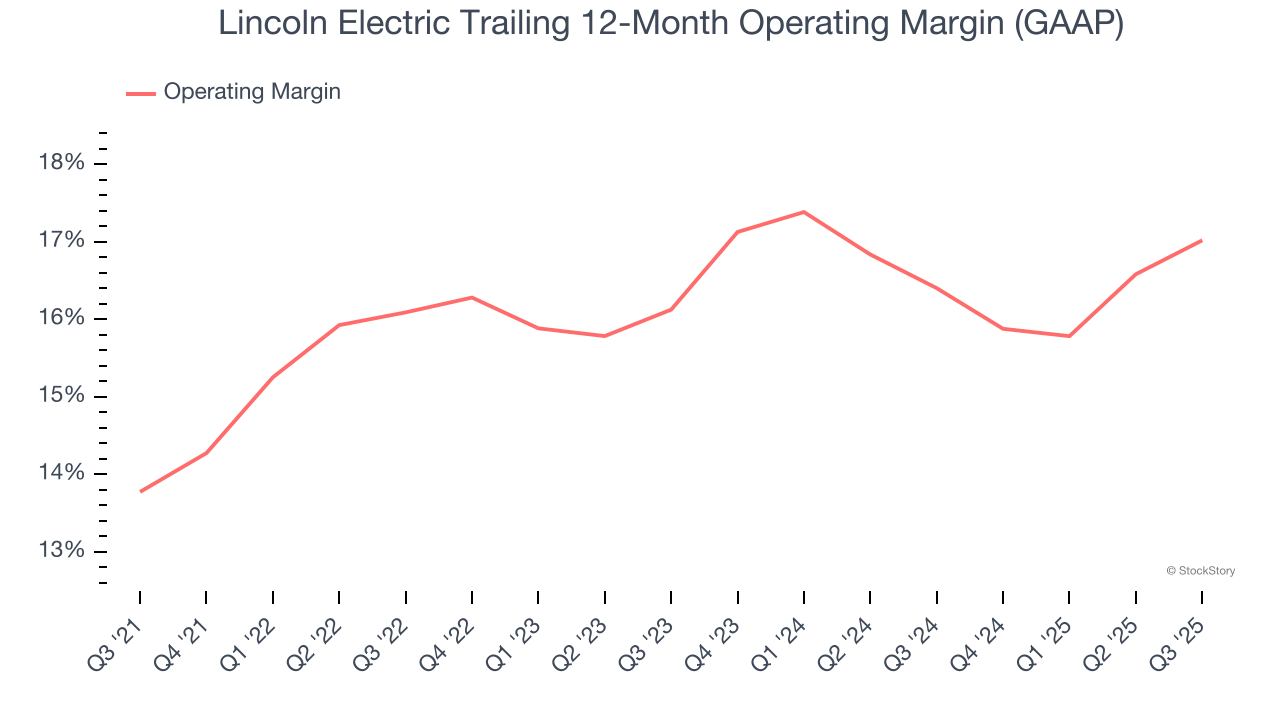
In Q3, Lincoln Electric generated an operating margin profit margin of 16.6%, up 1.9 percentage points year on year. The increase was encouraging, and because its operating margin rose more than its gross margin, we can infer it was more efficient with expenses such as marketing, R&D, and administrative overhead.
Earnings Per Share
Revenue trends explain a company’s historical growth, but the long-term change in earnings per share (EPS) points to the profitability of that growth – for example, a company could inflate its sales through excessive spending on advertising and promotions.
Lincoln Electric’s EPS grew at an astounding 19.3% compounded annual growth rate over the last five years, higher than its 9.1% annualized revenue growth. This tells us the company became more profitable on a per-share basis as it expanded.
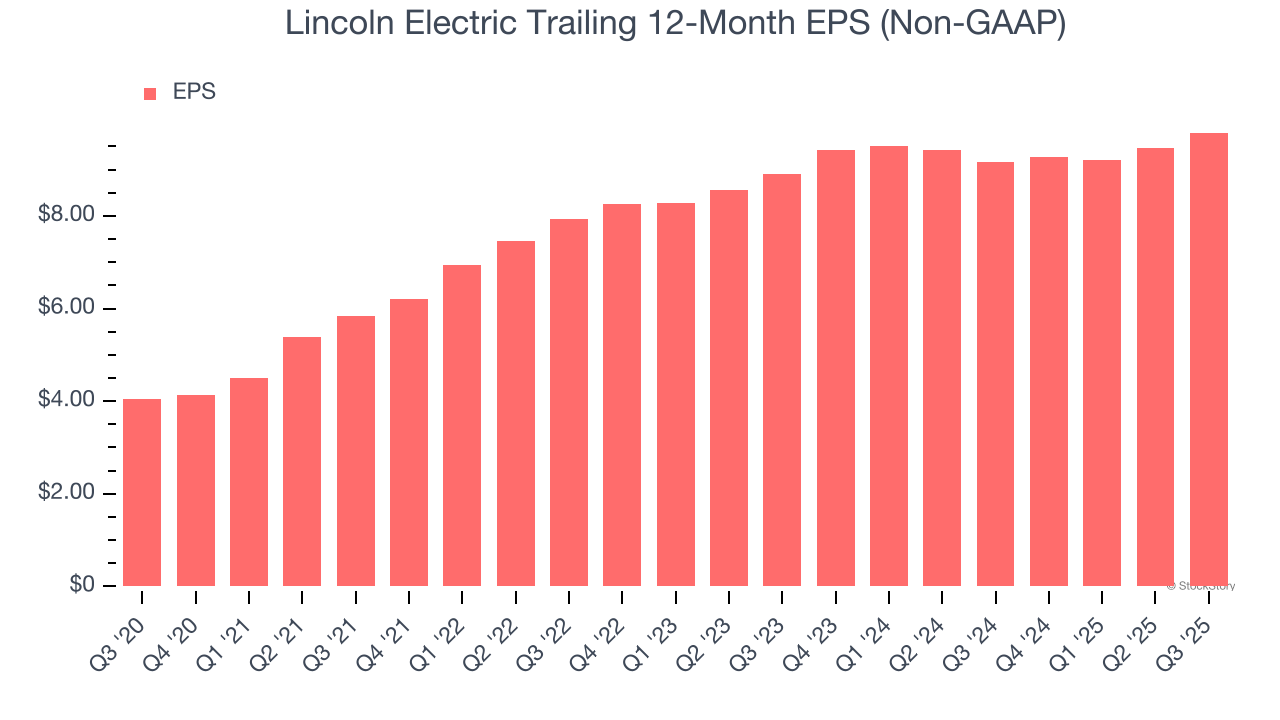
Diving into Lincoln Electric’s quality of earnings can give us a better understanding of its performance. As we mentioned earlier, Lincoln Electric’s operating margin expanded by 3.2 percentage points over the last five years. On top of that, its share count shrank by 7.4%. These are positive signs for shareholders because improving profitability and share buybacks turbocharge EPS growth relative to revenue growth. 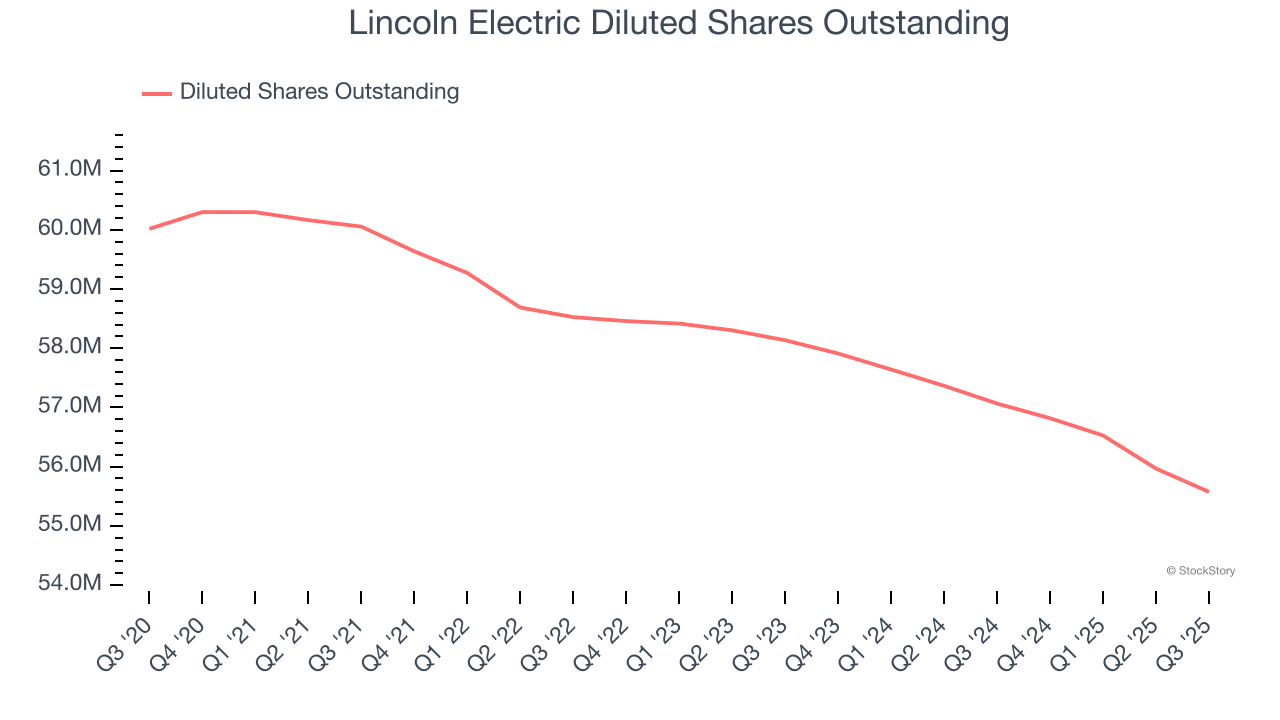
Like with revenue, we analyze EPS over a shorter period to see if we are missing a change in the business.
For Lincoln Electric, its two-year annual EPS growth of 4.9% was lower than its five-year trend. We hope its growth can accelerate in the future.
In Q3, Lincoln Electric reported adjusted EPS of $2.47, up from $2.14 in the same quarter last year. This print beat analysts’ estimates by 1.9%. Over the next 12 months, Wall Street expects Lincoln Electric’s full-year EPS of $9.80 to grow 8.2%.
Key Takeaways from Lincoln Electric’s Q3 Results
We enjoyed seeing Lincoln Electric beat analysts’ organic revenue expectations this quarter. We were also happy its revenue and EPS both outperformed Wall Street’s estimates. Zooming out, we think this was a solid quarter. The stock remained flat at $236.50 immediately after reporting.
So should you invest in Lincoln Electric right now? What happened in the latest quarter matters, but not as much as longer-term business quality and valuation, when deciding whether to invest in this stock. We cover that in our actionable full research report which you can read here, it’s free for active Edge members.
